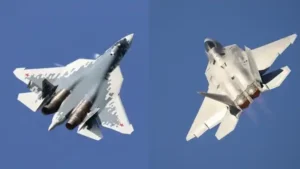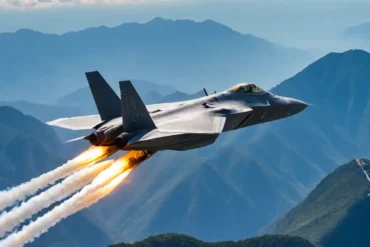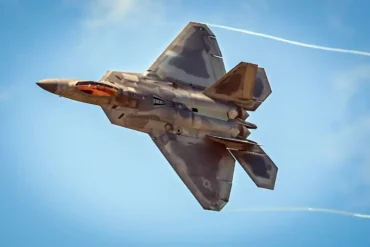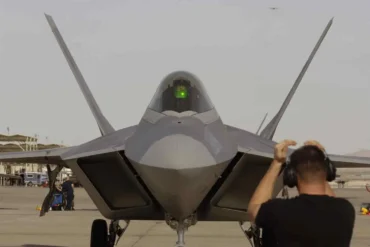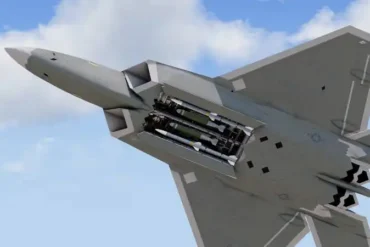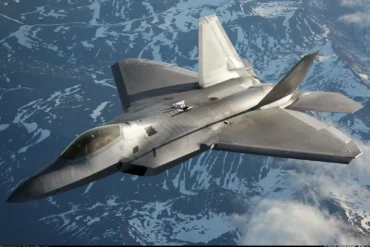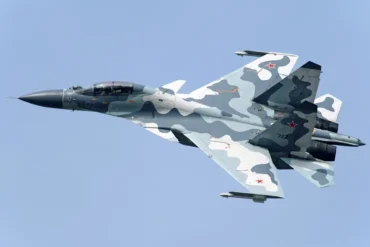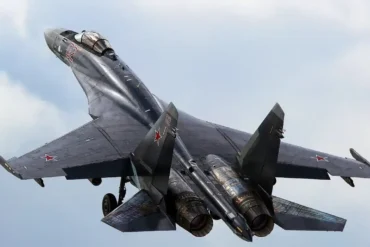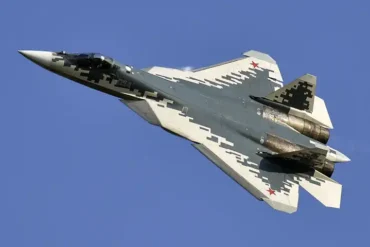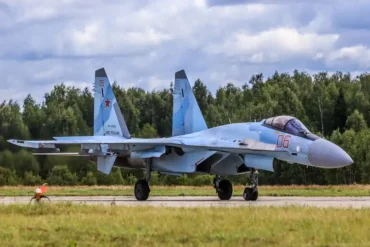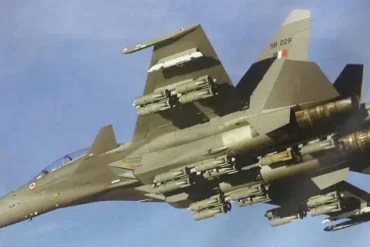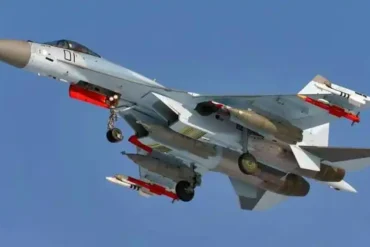The F-22 Raptor, an extraordinary American jet, and the SU-27 Flanker, a powerful Russian jet, stand out as exciting marvels for their countries. Comparing them goes beyond just their technology, showing the lasting impact of Cold War rivalry.
In exploring aerial warfare, we’ll look at the design, abilities, and power of these iconic aircraft. Whether you love aviation or the military, seeing the F-22 Raptor and SU-27 Flanker face off will stir your imagination and passion for these wonders of the sky. Join us on this adventure to uncover the strengths and weaknesses of these jets, shedding light on the classic question – who really rules the skies?
Sukhoi SU-27 vs F-22 Raptor
Design and Development:
SU-27 Flanker: A showcase of Soviet engineering, the Sukhoi SU-27 Flanker first flew in the 1970s, made to evolve with Soviet Air Force needs. Focusing on agility and adapting to different settings, the SU-27 has a twin-engine layout, huge wing area, and robust design.
F-22 Raptor: In contrast, the F-22 Raptor joined the U.S. Air Force recently, in the early 2000s. Tailored for stealth and awareness, the F-22 uses leading stealth features, supercruise (supersonic speed without afterburners), and incredible thrust vectoring.
Stealth and Radar:
SU-27 Flanker: Counting on agility and speed, the SU-27 dodges enemy radar and missiles. It has electronic countermeasures but lacks the F-22’s stealth, making it easier to spot on modern radar.
F-22 Raptor: Stealth is everything for the F-22. Carefully shaped and made of special materials, it’s a puzzle for radar to detect. The F-22 can get near targets unseen, a huge plus in combat.
Avionics and Sensors:
SU-27 Flanker: The SU-27 mixes some modern avionics with Soviet-era systems. While capable, its radar and sensors fall short of the F-22’s sophistication. It engages multiple targets but not as well as the F-22.
F-22 Raptor: With cutting-edge avionics and sensors, the F-22 has unmatched awareness. The AN/APG-77 radar and electronics give it a big edge in tracking and hitting targets.
Performance and Maneuverability:
SU-27 Flanker: Famous for great maneuverability, the SU-27 pulls off impressive stunts and can out-turn most modern jets. But it doesn’t match the F-22 overall.
F-22 Raptor: Mixing speed, stealth, and thrust vectoring, the F-22 outdoes nearly any adversary in dogfights. It supercruises, stays fast, and makes extreme moves while staying aware.
Weapons and Payload:
SU-27 Flanker: Able to carry various air-to-air and air-to-ground weapons, the SU-27 lacks internal bays for stealthy loads. It focuses on controlling the skies.
F-22 Raptor: With internal bays for its weapons, the F-22 minimizes radar visibility. Extremely versatile, it expertly takes on air and ground targets.
Cost and Availability:
SU-27 Flanker: A budget buy at $30 million each, the SU-27 gives you performance for less. Exporting it widely, from China to India, makes it accessible abroad.
F-22 Raptor: The intricate F-22 is pricey, at $125 million a plane. Exclusive to America, it’s not for export, limiting availability. Its small production run also reduces access.
Range and Endurance:
SU-27 Flanker: With greater reach than the F-22, the SU-27 excels at lingering on station for extended times. This proves vital in missions needing long loitering.
F-22 Raptor: Despite shorter range, the F-22 uses supercruise to swiftly reach targets. Relying on stealth and awareness, it makes up for less endurance.
Export and Global Impact:
SU-27 Flanker: Exporting widely to China, India, Vietnam, etc., the SU-27 shapes global military balance. Its design has influenced other jets worldwide.
F-22 Raptor: Due to U.S. limits on tech, the unexported F-22 stays exclusive, lacking the SU-27’s global reach.
Role and Doctrine:
SU-27 Flanker: Built for air superiority, the SU-27 focuses on beating enemy aircraft with agility and controlling airspace.
F-22 Raptor: The versatile F-22 excels at both air-to-air and air-to-ground missions. Its doctrine includes deep strike and electronics, adapting it for modern conflicts.
Combat History:
SU-27 Flanker: Battle-tested from the Balkans to the Middle East, the SU-27 proves decades of combat ability.
F-22 Raptor: With limited combat due to deployment limits and lack of rivals, the F-22’s record is mostly domestic exercises and training.
Similarity Between Sukhoi SU-27 and F-22 Raptor
Despite their distinct traits, some similarities mark the SU-27 and F-22:
- Versatility: Though focused on air superiority, both adapt to diverse missions.
- Modernization: Upgrades keep both relevant, boosting capabilities and extending service life.
- BVR Engagement: Equipped for Beyond Visual Range fights, using radar and infrared missiles.
- Supersonic Speed: Both hit supersonic speeds, with the F-22’s supercruise enabling sustained supersonic flight for better fuel efficiency.
- Air Superiority: Both rule the skies, built to beat and destroy enemy aircraft.
- Twin Engines: Both have twin engines for redundancy and resilience.
- Advanced Avionics: Cutting-edge avionics and sensors increase pilot combat ability and awareness for both.
- High Altitude Operations: With 60,000+ foot ceilings, both perform well at high altitudes
Conclusion
In this full comparison, the SU-27 Flanker and F-22 Raptor prove to be fearsome jets, each with standout strengths. The SU-27 wins on maneuverability and cost-effectiveness, with proven success over decades. Meanwhile, the F-22 Raptor shows superior stealth, avionics, and awareness. Choosing between them depends on the mission, and comparing them often reflects the technology and tactics of the operating countries. These aircraft represent the pinnacle for their nations, fascinating both aviation and military fans.
